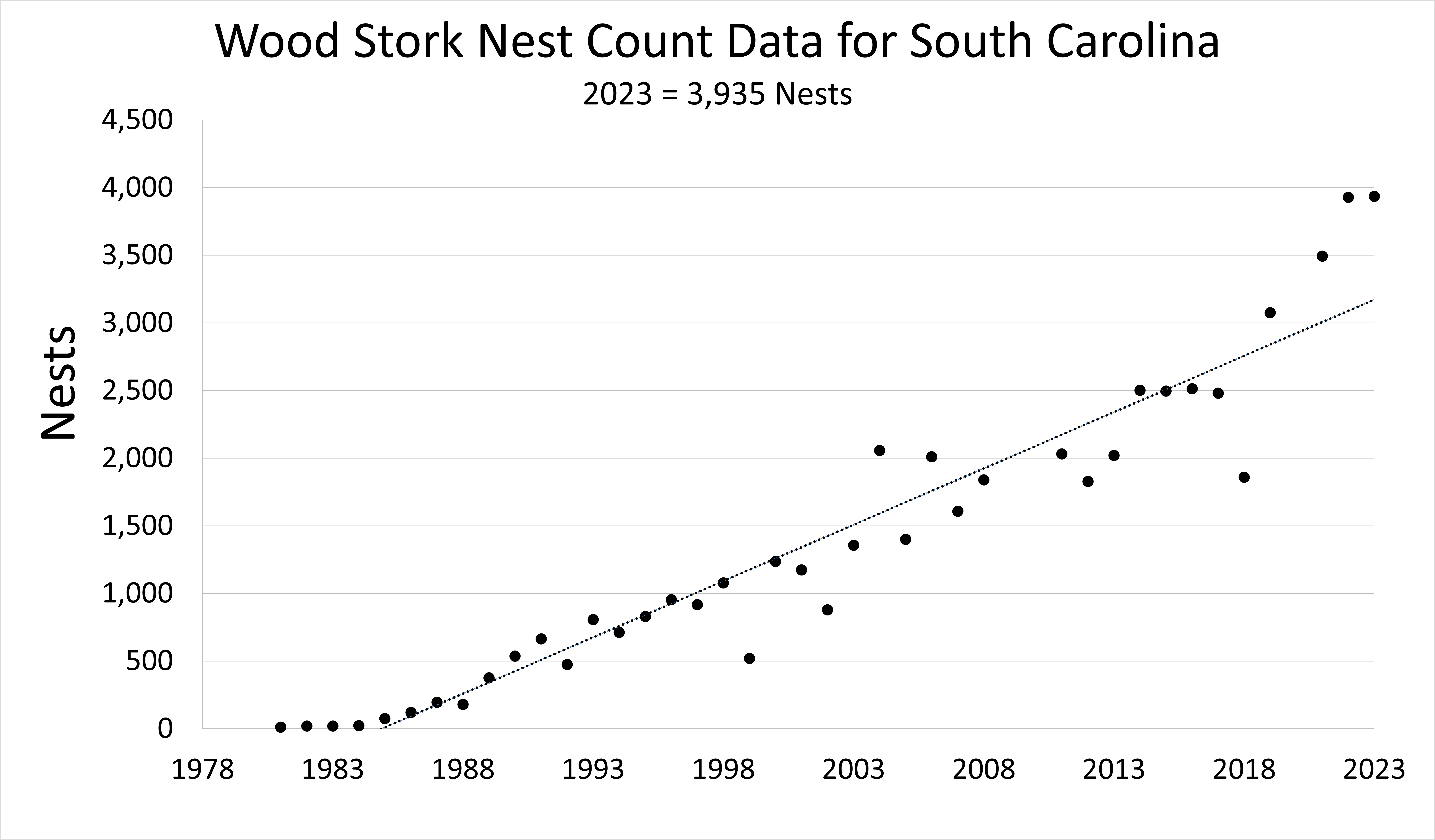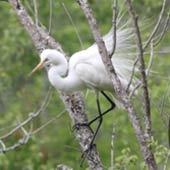SCDNR Wading Bird Program
News Releases
- December 5, 2022 SCDNR notes record number of wood stork nests in 2022
- November 9, 2016 SCDNR surveys show record number of wood storks nested in 2016
- October 22, 2015 Wood Storks had a successful nesting season in 2015
- August 28, 2015 DNR asks public to report sightings of banded wood storks
- September 11, 2015 Boardwalk at Dungannon Plantation Heritage Preserve reopened
- October 22, 2014 Record high number of stork nests in SC during 2014
- August 14, 2014 2014 Wood Stork Banding Update
- June 26, 2014 Fish and Wildlife Service Announces the Down-listing of Wood Stork
Nesting Updates

Staff
 Christy Hand
Christy Hand
Wildlife Biologist
SCDNR Wildlife and Freshwater Fisheries Division
585 Donnelley Drive
Green Pond, SC 29446
Seasonal Technicians
Mary Bresnihan (2023)
Natalie Donofrio (2022)
Rachel Bonafilia and Kirsten Steininger (2021)
Wray Gabel, Rachel Bonafilia, and Cynthia Worthington (2020)
Ella DiPetto, Constance Powell, and Carissa Smith (2019)
Sammy Chandhok and Tori Thorpe (2018)
Zena Casteel (2017)
Abbie Dwire (2016)
Kristin Brunk (2015)
Caitlin Bowman (2014)
Lisa Smith (2013)
Jennifer Bruce Kindel (2012)
Report a Banded or Tagged Wading Bird
Researchers have placed metal bands, colored bands with engraved numbers and/or letters, wing tags, radio transmitters, and satellite transmitters on a small number of wading birds. We are interested in any sightings of marked birds. This information helps us to learn about the movement patterns and life spans of wading birds. More information about the purpose of banding birds can be found at the Bird Banding Lab website.


If you see a live bird with an engraved color band, we would appreciate it if you could attempt to read the numbers/letters on the band or tag. Please also record the species of the bird, the color of the band or tag, the color of the letters, which leg that band was attached to, and the location of the bird. Please report your sighting to the Bird Banding Lab through their website. Photographs of the bird and the band can be uploaded and are very helpful. If you can read the code on the large colored band, it is not necessary to also read the numbers on the small metal bands worn by live birds; however, numbers from metal bands found on dead birds should be reported to the Bird Banding Lab. Wood storks that have been outfitted with satellite transmitters often have a coded color band as well as a tall color band without a code. The blue band shown in this photograph is an example of a tall color band without a code. Additional examples of banded wading birds are available in the photo gallery. All of the wood storks that have been color banded in South Carolina have orange bands with black alphanumeric codes.
Report a Wading Bird Colony
Although the majority of the wading bird colonies in the coastal area of the state are known and regularly surveyed by SCDNR, you may know of a colony that we have not surveyed. You can help the program by reporting colonies. If you would like to report a colony, please email a description including the species present, the location (the nearest roads, town, and GPS coordinates if possible – Do Not Enter The Colony – Google Earth can be used to generate coordinates), and the years the colony has been active to wadingbirds@dnr.sc.gov.
Because many wading bird colonies are located on private land and we respect the privacy of the landowners, we are not able to post a detailed map of the known colonies on our website.




